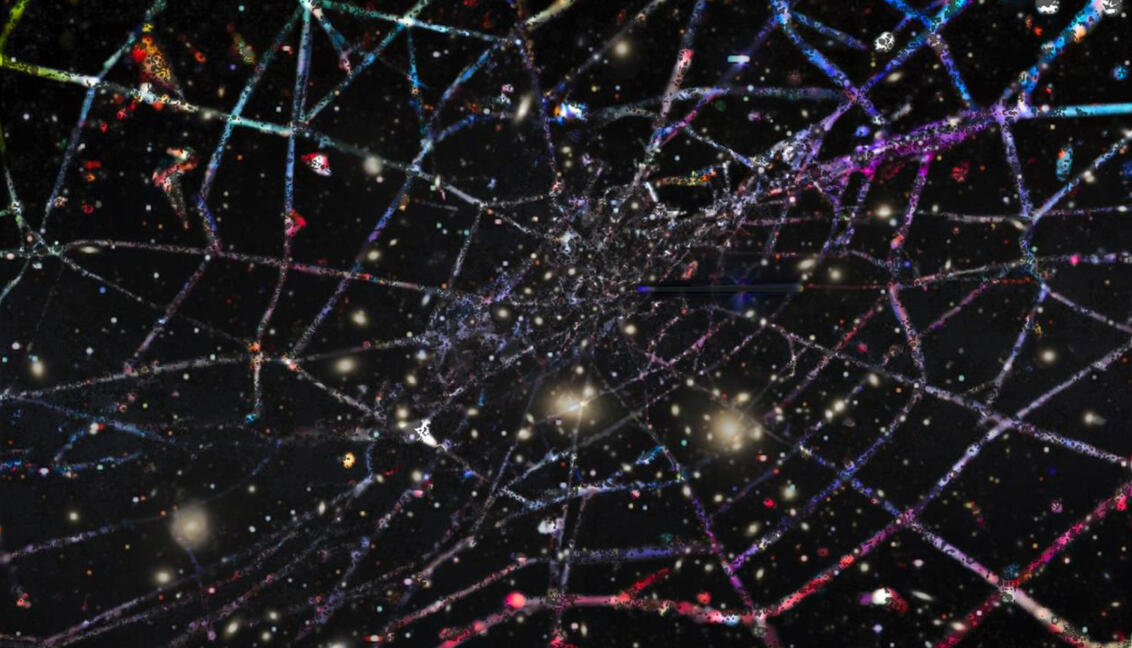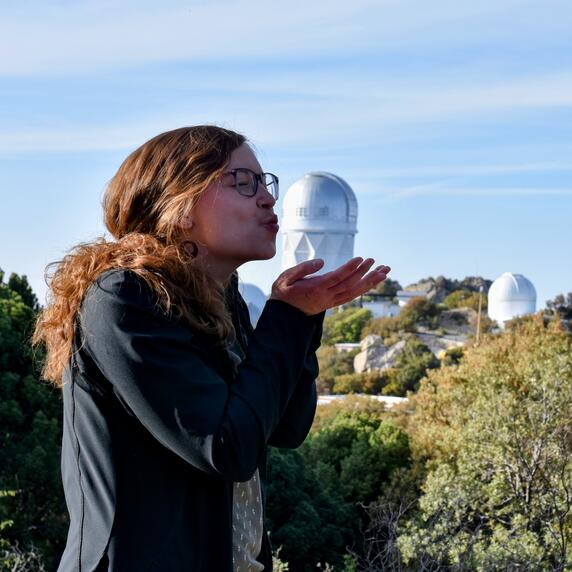
Gauging the intrinsic alignment of galaxies for a more accurate map of the universe
MARCH 18, 2024
Mapping the Universe

Courtesy of Clare Lamman
Located at the top of Kitt Peak, about 50 miles southwest of Tucson, Arizona, DESI—and its 5,000 tiny robots—has already measured the distances to 40 million galaxies. The map that the instrument is creating allows scientists to see how the structure of the universe evolved over time.
“Light takes time to travel,” Lamman explains. “The galaxies that DESI sees contain light of varying ages. Looking at galaxies that are more distant is looking further back in time.”
To understand how old this light is, astronomers use spectroscopy, a technique that identifies the constituent parts of the light emitted from galaxies at varying distances. The color of a galaxy’s light—specifically its redness—reveals how fast it’s moving away from the Earth. This is directly related to its distance and, therefore, age.
“Think of the shift in the redness of a galaxy’s light like the change in the pitch of a train’s horn as it zooms past you,” Lamman says. “Sound waves sent out by something moving away are spread out and sound lower. Light from a galaxy moving away from us will be stretched and appear redder. Then, the faster a galaxy is moving away from us, the more distant it is. This is because space is expanding. The further away a galaxy is from us, the more space there is between us and it to expand.”
Although DESI is capturing the data of a record 50 million galaxies, most of the web is made of invisible dark matter. To build a reliable map of the universe based on the data from those 50 million galaxies, astronomers need to understand how the galaxies are connected to the underlying web.
Galaxies are not scattered randomly throughout the universe but tend to correlate like strands where there appears to be more dark matter. (Hence, the analogy of a web.) The gravitational pull of dark matter also affects the shape and orientation of the galaxies.
https://gsas.harvard.edu/news/untangling-cosmic-web
